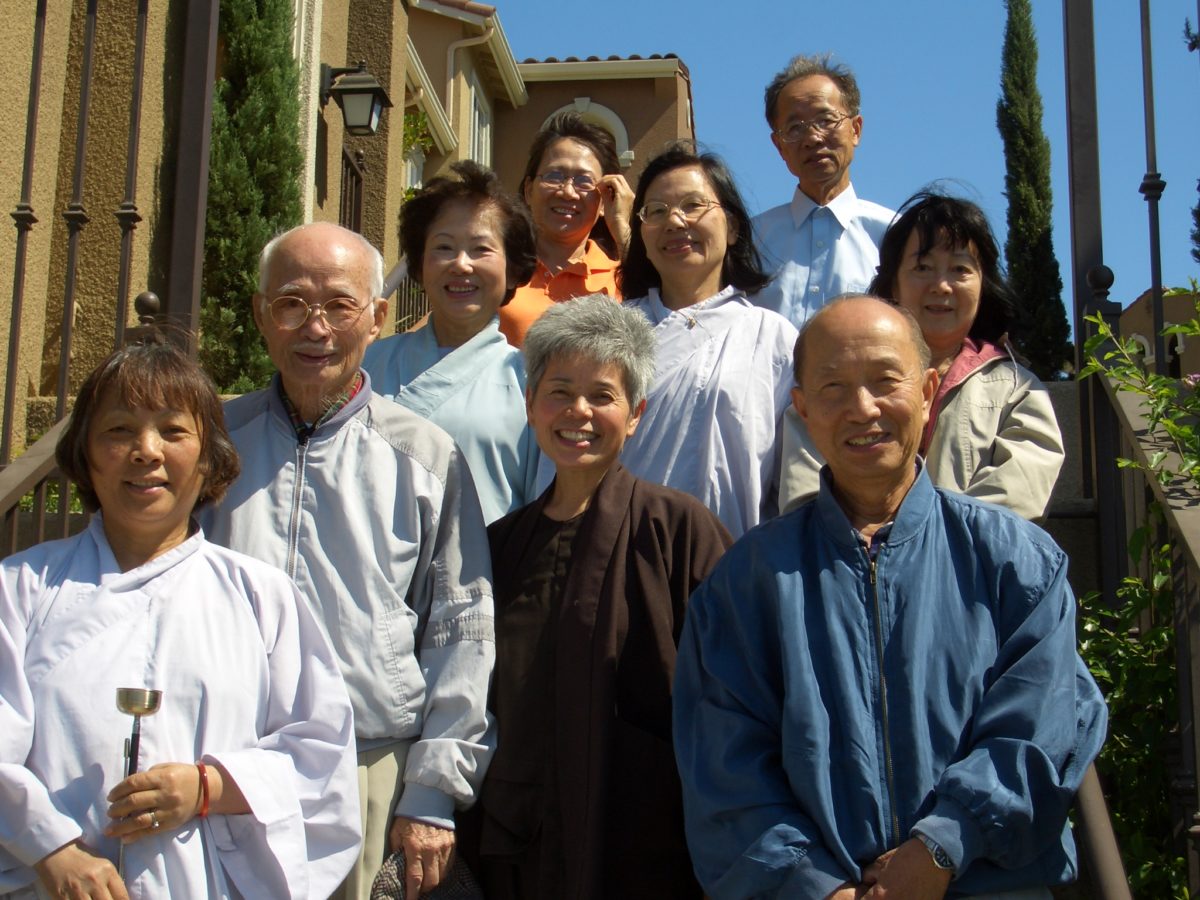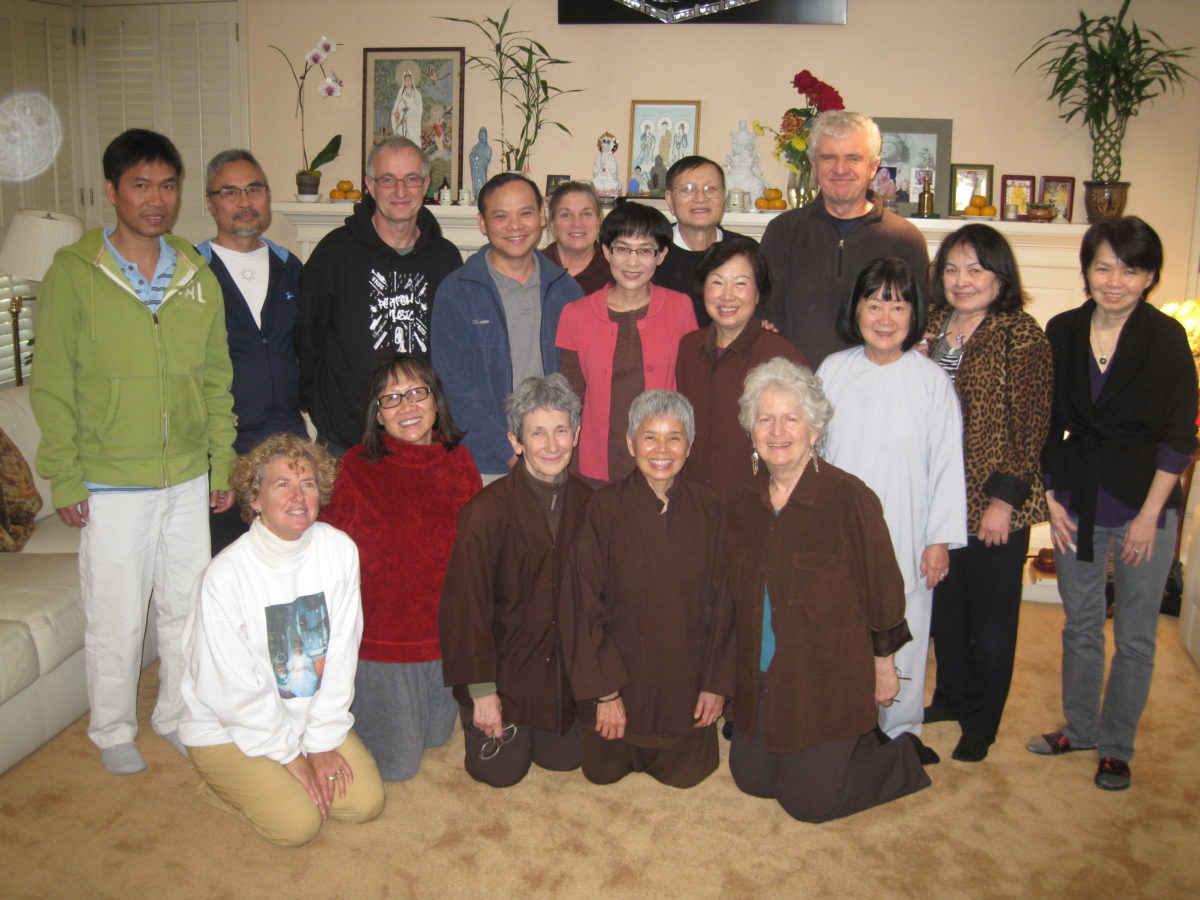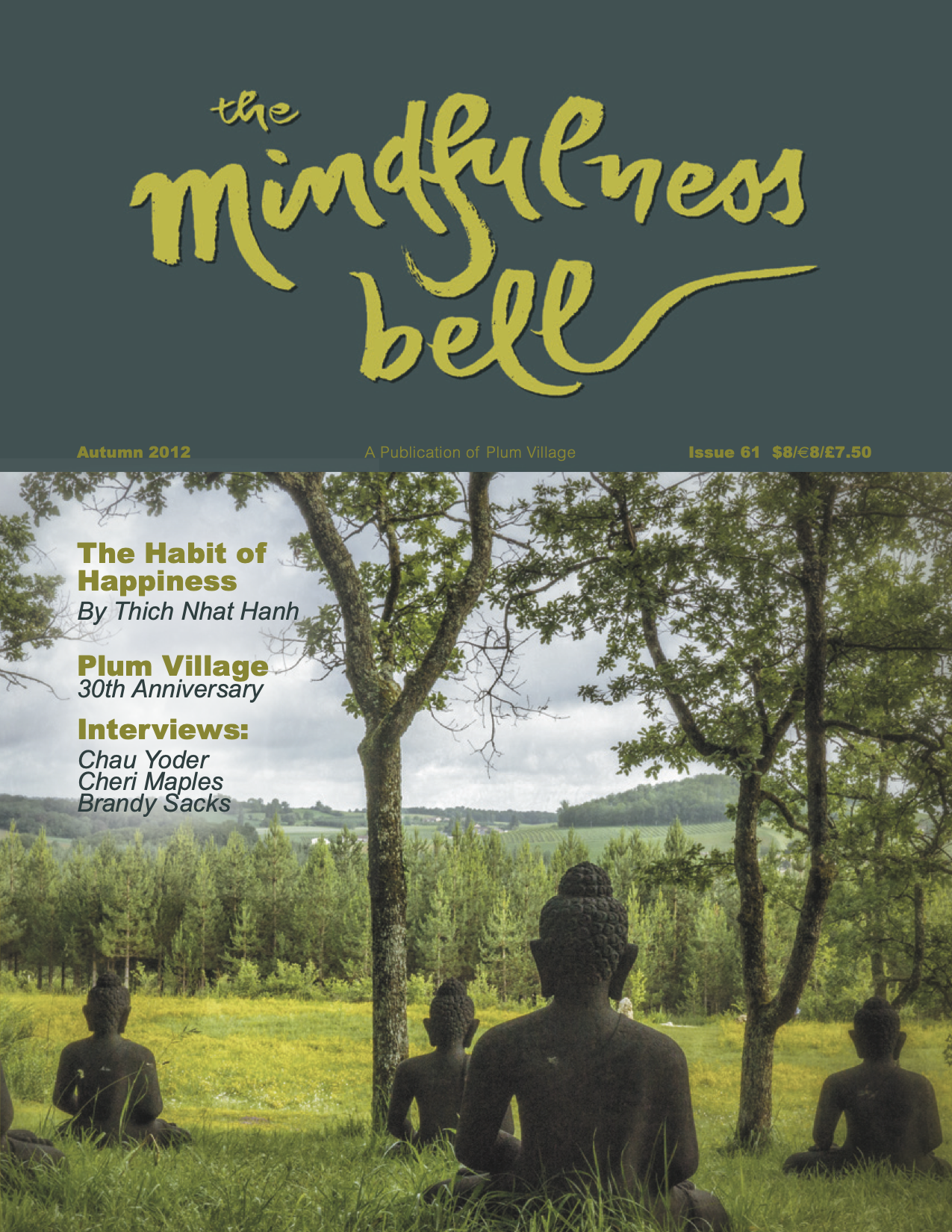An Interview with Chau Yoder

ChauYoder, Tam Luu Ly / Chan Tham Tue, was born in Hanoi, Vietnam and lives in Walnut Creek, California with her husband Jim, to whom she has been married since 1971. They have two adult daughters, Ann and Lynn. Chau earned her Bachelor of Science in Electrical and Electronic Engineering (B.S.E.E.E.) from California State University at Fresno and worked for twenty-five years at Chevron Corporation—as a manager in Chevron Information Technology,
An Interview with Chau Yoder

ChauYoder, Tam Luu Ly / Chan Tham Tue, was born in Hanoi, Vietnam and lives in Walnut Creek, California with her husband Jim, to whom she has been married since 1971. They have two adult daughters, Ann and Lynn. Chau earned her Bachelor of Science in Electrical and Electronic Engineering (B.S.E.E.E.) from California State University at Fresno and worked for twenty-five years at Chevron Corporation—as a manager in Chevron Information Technology, then Manager of Network Operations, and later as a consultant in Applied Behavioral Science.
Chau has a deep aspiration to share specific and important methods and techniques for enhancing mindful living, all emphasizing self-awareness of body and mind. She studied with Master Ce Hang Truong to become a trainer in Integral Tai Chi and learned MBSR (Mindfulness-Based Stress Reduction) from Jon Kabat-Zinn, Ph.D. She is currently an active Dharma Teacher, ordained by Zen Master Thich Nhat Hanh in 2003. Since 1989, she has offered workshops and classes on mindful leadership, mindful living, and qigong to promote healthy and happy living. She has presented her programs in youth, corporate, and retreat environments.
Chau Yoder was interviewed by Natascha Bruckner on July 17, 2012, for this special anniversary issue of the Mindfulness Bell.
Mindfulness Bell: The autumn issue of the Mindfulness Bell is celebrating the 30th Anniversary of Plum Village. When did you first go to Plum Village? Would you share a meaningful experience from your time there?
Chau Yoder: In 1997 I went to Plum Village for the first time, and in Thay’s first Dharma talk, he encouraged everybody to be in extended silence. I spent about ten days in silence except during Dharma discussions. I discovered the power of silence. Once during the week, a young nun misunderstood my actions and she scolded me, but I hadn’t done what she was accusing me of. I caught myself ready to respond and heard my inner voice: “Oh! I’m in silence.” So I just stayed quiet. I was so free. I felt so good. That’s why now I talk about the power of silence.
MB: Did you notice a deeper silence internally because of the external silence?
CY: I recognize that I catch my own thinking more. I am able to sort it out, able to understand myself better. I call it peeling the onion. I recognize my bad seeds and my good seeds.
MB: When and how did you first meet Thay? As a young practitioner, did you have interactions with Thay that were particularly influential or transformative?
CY: In 1987 I read Thay’s books, Peace Is Every Step and Being Peace. His writing is so clear. Thay’s Dharma body exhibits a peace and calmness that I really like. I observed his mindful walk—he was so there in the moment. I felt like when I found Thay’s teaching I returned to my roots, both with blood and spiritual ancestors.
In 1991, I had a pivotal moment during a five-day retreat at Kim Son Monastery in Watsonville, California. I was sitting with my mom next to me when Thay Phap Dang chanted a sutra. Suddenly, tears poured down my face and I couldn’t stop crying through the lunch that followed. I couldn’t eat. After lunch, I wrote a letter to Thay and put it in the bell.
When you ask Thay a question, he’ll often answer it in public somewhere, and you feel like, “Oh, he’s talking to me.” That afternoon Thay said in his talk, “Watch out for your desire. Don’t think the grass is greener on the other side of the fence.” I felt like he was talking to me. I had signed my name to the letter, so the abbot of Kim Son, Thay Tinh Tu, came out and touched my head and talked to me, trying to console me. That was a pivotal moment. That’s when I recognized that the seeds in me of wanting to be a nun were so strong.
Years later, Thay talked to me when I was at his hut in Plum Village with a few others. Thay was talking about people like me, who are married. He turned to me and said, “If your will is strong, then you can do it. Right, Chau?” I knew he was right. I knew that my will was not strong enough to become a nun. More and more, people keep encouraging me to nurture the seeds inside of me to be a monastic and maybe one of these days, one of these years, at least next lifetime, I can be. And that’s my vow. Next lifetime, I want to be a little boy novice. [Smiles.]
My parents didn’t want me to be a monastic, so I studied hard to get a scholarship and came from Vietnam to the U.S. The first day I arrived at California State University, Fresno (which was about two weeks after I arrived in the U.S.), I saw my husband, Jim, and fell in love and that was it!

MB: You’ve devoted your life to the practice as a layperson. How have you manifested a devout daily practice?
CY: I believe that practicing with Thay Tu Luc, the abbot of the Compassion Meditation Center in Hayward, California, is one of my key activities that help me to be on the path of mindfulness. I am lucky to have this condition in my life, so I don’t have to go to Deer Park Monastery or wait until Thay Nhat Hanh comes. Thay Tu Luc represents Thay Nhat Hanh’s teaching here for me.
When I went to the retreat with Thay at Kim Son Monastery in 1989, the abbot, Thay Tinh Tu, taught us the sixteen health stick exercises, the ones that Plum Village does now. Every morning, I went and practiced with him at 5:30, before Thay’s events. One morning, he handed the stick to me and said, “Take this home and practice.” So I took it home, practiced, and eventually taught it along with meditation to my work colleagues at Chevron. It really helped them with their stress. That started my teaching career.
Then Jim and I went to the retreat for business people at Plum Village in 1999. There, Sister Chan Khong asked me to lead La Boi Publishing [publishers of Thay’s books in Vietnamese]. The more I got to edit Thay’s books, the deeper I got into his teaching. I really treasure that.
MB: Can you tell me a little bit more about La Boi Publishing?
CY: At the beginning, I headed a team of volunteers. Every year for a while, we published two or three books of Thay’s in Vietnamese. It was really active. But in 2005, when Thay started to go to Vietnam, more books were printed in Vietnam. They’re much cheaper to publish there. Eventually we lost our free storage space for La Boi, so it became more practical to print all the books in Vietnam.
Thay also encouraged us to share the Dharma and to practice together. In 1999, we created a monthly meditation group called La Boi Sangha. At first it was purely Vietnamese, and then a few English-speaking people joined us. We became bilingual. But now we’ve returned to only Vietnamese. I feel like I’m a bridge between Vietnamese and English, so I encourage people to do both.
MB: I am curious about your work with bridging between the Vietnamese and Western cultures. How are you a bridge, and how does that feel for you?
CY: It’s just natural, I think, because I’m married to Jim and because I came here when I went to school in 1967. My English speaking and understanding is pretty good, so I can connect with English-speaking people and I still have the roots of Vietnamese, especially after I started to edit and publish Thay’s books in Vietnamese. Also conditions have been right, because in 1999 I started to be more involved with the English-speaking Community of Mindful Living in Northern California and with Parallax Press.
MB: Did you find that your practice changed after you received the Lamp Transmission?
CY: Not really. Like I mentioned, I have been teaching since 1989. After the Lamp Transmission, maybe people notice you more. Thay said that we are all Dharma teachers already, and we just have to share what we learn. The key thing is that we have to stay fresh and joyful and we have to watch out for becoming cocky. Of course, I’m very honored. The lamp is in the front of my house, so I’m reminded and thankful for Thay and the community to keep the trust in me, to give me that opportunity.
MB: What activities are you involved in that bring the Dharma to life for you?
CY: For sixteen years I have been teaching mindful leadership to 147 senior high school students and twenty adults at an annual Rotary Leadership camp. Since 2007, about once a year I travel with my husband to a foreign country to deliver several hundred prosthetic hands and train people who have lost their hands.
MB: Your email address includes the phrase “high spirits.” In my perception, you’re a person of very high spirits and joy. How do you keep your joy alive every day?
CY: Every day I lie down and appreciate the Buddhas in the ten thousand directions who help me and the people around me to see and follow the path. Namo Amitabha, Namo Avalokiteshvara. I also write in a little notebook all the affirmations for my five organs, for my mind and body, to stay centered and happy. Every morning before I get up, I recite in Vietnamese the waking-up gatha that Thay wrote. I pray that beings around me help themselves and protect themselves, and if I accidentally harm any beings, then please help them to go to nirvana. That’s my normal routine. Then I get up, and I sit and meditate and pray and chant and invite the bell. I walk here and there mindfully every day. For exercise I do tai chi, qigong, and yoga.
I remember Thay said it is important to be fresh as flowers. Take care of yourself so you can take care of others. Morning and night, I focus on my joyful and beneficial daily spirit with a beginner’s mind vow and appreciation. Since 1989, I’ve been teaching at a weekly cancer support group. I also teach at a Jewish old folks’ home, and I still teach at Chevron once a month. I’ve pretty much surrounded myself with these things. I’m just so thankful, sitting here, looking out the window, thankful for this little awesome place we have to remind me of nature and practice.
Since I began to practice with Thay, I’ve learned to enjoy nature so much more. I used to be a city girl. And I used to be very scared of death—of my family’s death, of my own death. I had a one-year-old brother who died when I was only five; I cried and cried. When I studied with Thay and understood better about no coming, no going, that helped me so much. I no longer feel fear of death or worry about my loved ones. I learned from Thay and other teachers that we are nothing but energy. That helped me survive raising my two daughters. Now they are thirty-seven and thirty-three. Otherwise I would just worry about them so much. When I learned these things, I would pray to Avalokiteshvara, send Avalokiteshvara energy through me, in me, and then I’d give them loving energy and prayer energy. So I feel much more at peace. All of these practices help me to be in the moment.
Since I began to study with Thay and the community, I understand my body reactions much faster. I used to have pain from worry, from anxiety. I used to be a super Type A person. I know some of that energy is still in me, but I’m a calmer Type A! [Laughter.]
Before I studied with Thay, I learned from another practice how to transform my migraine headaches into nothing. No more migraine headaches! If I don’t do the mindful practices, both physical and mental, I can see the impact on my body.
MB: It sounds like you’ve had some deep transformations thanks to the practice.
CY: Yes, definitely. Someone who worked for me told me, “I used to be very scared of you.” I said, “What?” He said, “Yeah, we used to call you dragon lady! We were so scared of you.” If they didn’t perform, I would nail them, I guess. But then he said, “But now you’re very nice. You’re the best manager. We love you now.” So I learned to listen to people better, and understand them better, and empathize better. I know that when I first studied these things, I was so critical of myself. I was a perfectionist, and very critical of myself and of others. So I just created suffering for myself and others.
I have to agree; I have transformed a lot. My life is much more peaceful and joyful. I still yell back at Jim sometimes, but I know how to apologize and I stop myself much faster. I rarely have the blow-ups that I used to have frequently! I still have fear, anger, and anxiety when dealing with the difficulties of life; however, I feel that they are much less than before. I have to constantly work on being mindful and peeling my onion to transform my bad habit energy.
I am so thankful to the practice for my transformation. This is the momentum that helps me help others. I have found this path helps me have more joy and less suffering. That’s my vow, now—to help others and equally, myself, to have more joy and less suffering in life.
MB: What guidance would you like to share with young practitioners?
CY: PBS (Pause, Breathe, and Smile). Practice mindful breathing even just ten minutes a day to be a balanced, ethical, and compassionate leader—a leader of yourself. Treasure your greatness. Appreciate your youth and live mindfully in the moment. Practice when you are young; then you will have a much fuller life and balance in all areas of your life. You will definitely be happier. Practice a new routine for twenty-eight days straight to change your habits.

